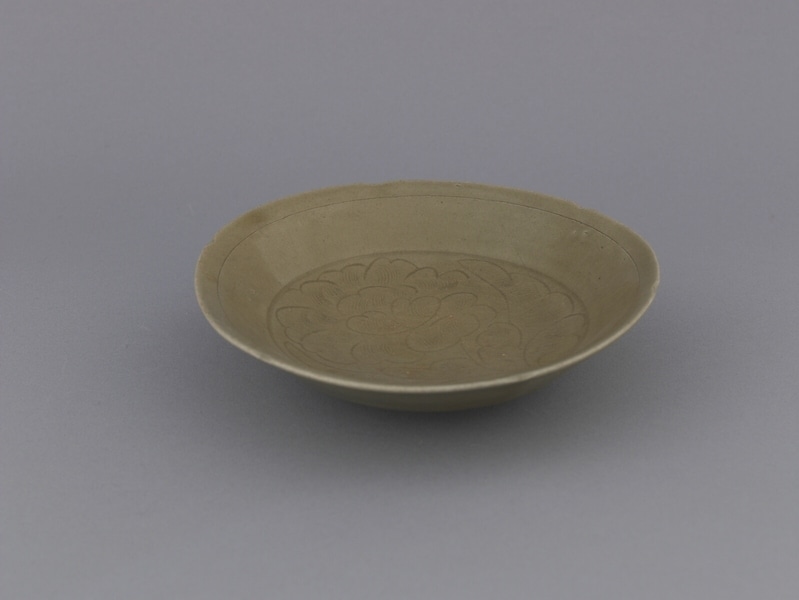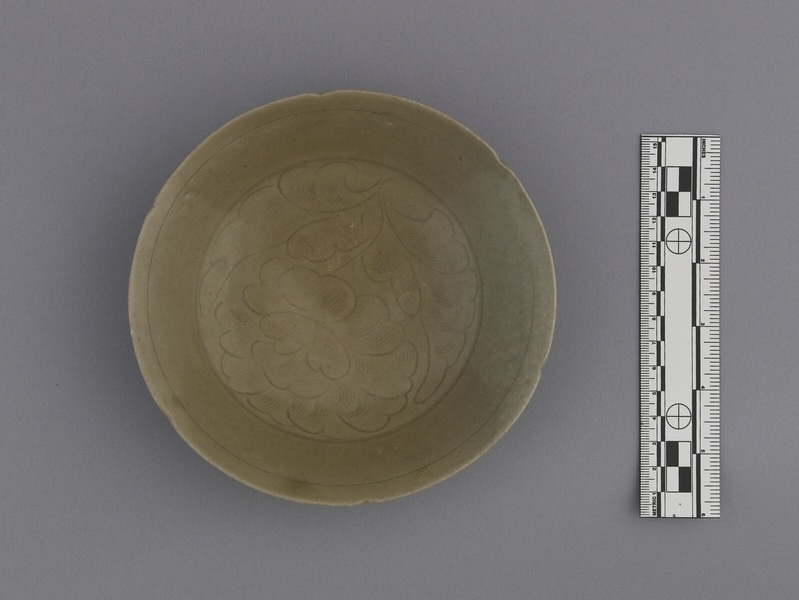Dish Item Number: N3.92 from the MOA: University of British Columbia



Description
Dish (jeopsi 접시; 楪匙). The six edges are slightly lobed at regular intervals to represent the shape of a flower. Incised peony and branch design with two leaves in centre. Unmarked. Traces of four spur marks in clay on the foot ring.
History Of Use
All kinds of pottery and porcelain produced during the Goryeo dynasty (고려; 高麗; 918–1392) are called Goryeo dojagi (Goryeo ware; 고려도자기; 高麗陶磁器). Celadon (green-gray glazed ceramic), known as Goryeo cheongja (고려청자; 高麗青磁), was the main kind of ceramic produced during this period in Korea. Celadon originated in China; Goryeo potters learned the techniques from the celadon traditions of the Song dynasty (960–1279). The Buan (부안군) and Gangjin (강진군) regions in Jeolla Province (전라도) became major production centres by the mid-twentieth century, and Gangjin remains the centre for Goryeo cheongja revival and modern celadon production.
Narrative
Collected by J. H. Morris while he was chief engineer for Seoul Railway, Korea.
Specific Techniques
The rim of this dish was slightly cut, to create a flower shape. This type of flower-shaped dish was popular in the mid-Goryeo dynasty (고려; 高麗; 918–1392). Flower-shaped dishes in general were popular during the Goryeo dynasty, and their origin is thought to have been influenced by metal dishes from the Tang dynasty (618-907), China. There were three ways to make a celadon flower-shaped dish: cutting the edges slightly, as was done with this dish, pressing from the outside to the inside using a slender tool, or using a flower-shaped mould.
Item History
- Made in Korea between 1100 and 1300
- Collected between 1899 and 1939
- Owned by Marion Stephan before August 1964
- Received from Marion Stephan (Donor) during August 1964
What
Who
- Culture
- Korean
- Previous Owner
- Marion Stephan
- Received from
- Marion Stephan (Donor)
Where
- Holding Institution
- MOA: University of British Columbia
- Made in
- Korea
When
- Creation Date
- between 1100 and 1300
- Collection Date
- between 1899 and 1939
- Ownership Date
- before August 1964
- Acquisition Date
- during August 1964
Other
- Item Classes
- ceramics
- Condition
- good
- Accession Number
- 0113/0114